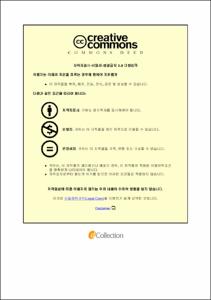우즈베키스탄과 인도네시아 정부의 금지정책 해제 이후의 히잡착용의 다중적 의미에 관한 연구
- Alternative Title
- A Study on the contested meaning of hijab after policy change in Uzbekistan and Indonesia
- Abstract
- The discussion about the hijab varies according to the historical context of the country and the government system, and there are various positions. The hijab is not just a name for Muslim women's clothing but also has a multifaceted and complex appearance as a political symbol of the country, a symbol of resistance to westernization, and a symbol of women's subordinate status. Not only that, but society's opinions about wearing the hijab and taking it off were very different. The content studied in this paper consists of the meaning and practice of the hijab in the context of women's rights in Indonesia and Uzbekistan.
Indonesia and Uzbekistan are countries that have been under dictatorship for a long time. Islam is the dominant religion in both countries. Since the hijab, the Islamic attire, has been attacked by various robbers, the perception and practice of it are constantly changing and are multifaceted. In Indonesia, jilbab (hijab) began to emphasize wearing religious attire with the beginning of the Islamization movement in the 1970s, but the popularization of the dress started in 2000. However, in the New Order system of the Suharto regime, wearing the hijab was banned as a measure to contain radical Islamism. Currently, wearing the hijab is optional and not compulsory under Indonesian national and local laws. In Uzbekistan, the state has strictly controlled the wearing of Islamic attire for women. However, in 2021, wearing the hijab became a free choice for women, making the hijab popular among young people. The government has implemented a policy prohibiting religious attire in educational institutions in both countries. Now, after the law was lifted in both countries, everyone has the right to wear religious clothing. However, considering the current situation in Indonesia, the religious dress code in public institutions and educational institutions is compulsory. In Uzbekistan, the state shows an intermediate attitude towards the hijab and controls the excessive spread of the hijab.
This thesis examines the effect of the Muslim dress banishment policy on the improvement of women's status in Indonesia and Uzbekistan. It also explores the meaning and practice of wearing a hijab for Muslim women when the banishment policy was lifted and wearing the hijab became women's free choice. It shows that wearing the hijab does not limit to a simple opinion on clothing but represents an issue of women's rights. It emphasized the need to study this multifaceted context considering numerous perspectives.
- Issued Date
- 2022
- Awarded Date
- 2022. 8
- Type
- Dissertation
- Publisher
- 부경대학교
- Alternative Author(s)
- Madaminova Dinora
- Affiliation
- 부경대학교 대학원
- Department
- 대학원 글로벌지역학과
- Advisor
- 정법모
- Table Of Contents
- I. 서론 1
1. 연구 배경 및 목적 1
2. 이론적 검토 및 연구의 틀 7
3. 연구대상 및 연구방법 15
II. 히잡금지 정책의 사회·역사적 함의 19
1. 우즈베키스탄 : 사회주의 정부와 여성의 경제 참여 독려를 위한 히잡 금지 19
2. 인도네시아 : 반이슬람 근본주의로서의 히잡 금지 26
3. 히잡 금지정책의 의도하지 않은 결과 32
III. 금지정책 해제 후 사회적 변화와 히잡착용의 의미 35
1. 히잡 착용 금지정책 해제 후의 복장 착용 변화 35
2. 히잡착용의 의미 49
1) 무슬림 여성들의 종교적인 의미에서의 히잡착용 선택 51
2) 무슬림 여성들의 패션 의미에서의 히잡 착용 55
3) 사회적·공간적 이동성 강화 및 노동권 향상 의미에서의 히잡 착용 선택 62
3. 무슬림 여성들에게의 히잡착용의 의미 68
IV. 히잡착용의 다중성과 여성인권 71
1. 복장과 종교표현의 자유 71
2. 세대변화와 종교에 대한 재해석 77
3. 이슬람 정체성의 강화와 자기 존엄성 80
V. 결론 85
참고문헌 90
부록 96
- Degree
- Master
- Files in This Item:
-
-
Download
 우즈베키스탄과 인도네시아 정부의 금지정책 해제 이후의 히잡착용의 다중적 의미에 관한 연구.pdf
기타 데이터 / 2.01 MB / Adobe PDF
우즈베키스탄과 인도네시아 정부의 금지정책 해제 이후의 히잡착용의 다중적 의미에 관한 연구.pdf
기타 데이터 / 2.01 MB / Adobe PDF
-
Items in Repository are protected by copyright, with all rights reserved, unless otherwise indicated.